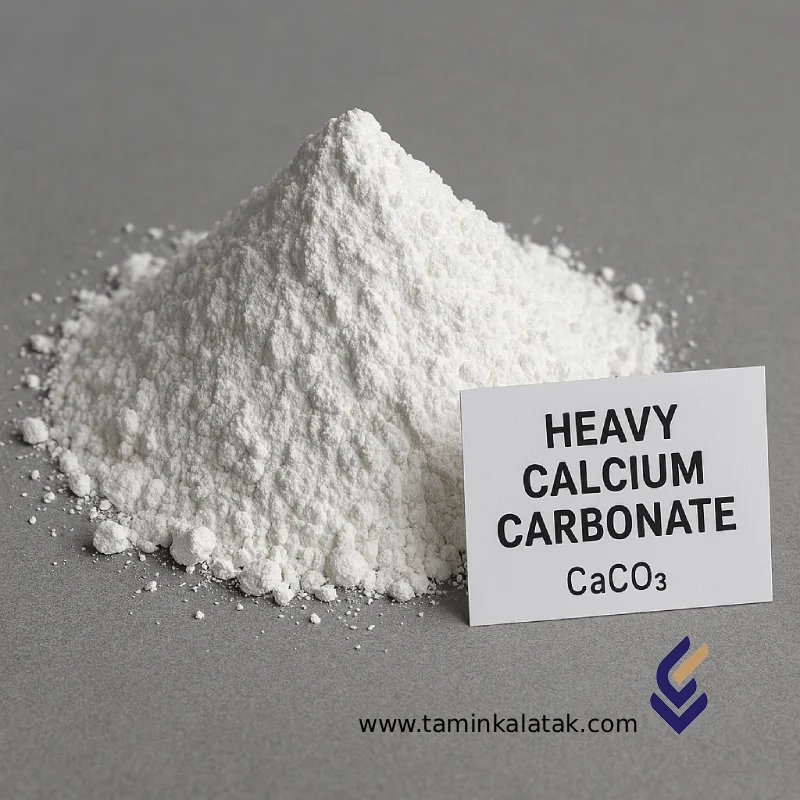Heavy calcium carbonate
Heavy Calcium Carbonate (GCC) is an inorganic mineral powder obtained by the mechanical crushing and fine grinding of natural limestone or marble.
Compared to light calcium carbonate (precipitated CaCO₃), it features higher density, larger particle size, and superior rigidity, making it ideal for use in plastics, paints, rubber, construction materials, and paper industries.
Chemical Structure
Heavy Calcium Carbonate is composed of calcium (Ca²⁺), carbon (C), and oxygen (O) ions, with the chemical formula CaCO₃.
It commonly occurs in calcite or aragonite crystal forms and is characterized by its high purity, thermal stability, and chemical inertness in most environments.
| Property | Description |
|---|---|
| Chemical Formula | CaCO₃ |
| Molecular Weight | 100.09 g/mol |
| Crystal Forms | Calcite, Aragonite |
| Bond Type | Ionic |
| Chemical Classification | Inorganic Carbonate |
Physical and Chemical Properties
| Property | Typical Value / Description |
|---|---|
| Appearance | White or off-white powder, odorless |
| True Density | ~2.71 g/cm³ |
| Bulk Density | 0.8–1.4 g/cm³ (depending on particle size) |
| Decomposition Point | ~1339°C (decomposes to CaO + CO₂) |
| Solubility in Water | Very low (≈0.013 g/L at 25°C) |
| pH (suspension in water) | Slightly alkaline |
| Stability | Chemically stable, reacts with acids to release CO₂ |
| Toxicity | Non-toxic, non-flammable |
Main Industrial Applications
1. Plastics and Polymers
Used as a functional filler to improve stiffness, dimensional stability, and reduce production costs.
2. Paints and Coatings
Enhances whiteness, opacity, and surface durability, serving as an economical extender pigment.
3. Rubber Industry
Improves abrasion resistance, tensile strength, and processing performance.
4. Construction Materials
Essential raw material in cement, concrete, decorative coatings, and flooring compounds.
5. Paper Industry
Used as a coating and filler pigment, increasing brightness and printability.
6. Animal Feed
Acts as a source of calcium in feed formulations for poultry and livestock.
Advantages
-
Economical and widely available natural mineral.
-
Excellent thermal and chemical stability.
-
Non-toxic and environmentally safe.
-
Improves mechanical and optical properties in end products.
-
Versatile — suitable for diverse industries including plastics, coatings, and construction.
Limitations
-
Low solubility in water — unsuitable for some aqueous chemical processes.
-
Dust generation during handling requires effective ventilation and PPE.
-
Reacts with acids, releasing CO₂ gas; should not contact acidic materials.
Safety and Storage Guidelines
-
Safety: Non-toxic, but avoid inhalation of dust; use protective masks and goggles during handling.
-
Storage: Keep in a cool, dry place, away from acids and moisture.
-
Packaging: Supplied in multi-layer kraft bags, jumbo bags, or bulk silos.
-
Transportation: Handle according to standard industrial hygiene and chemical transport regulations.
Summary
Heavy Calcium Carbonate (GCC) is a cost-effective, high-performance filler and extender used in numerous industrial applications.
Its stability, whiteness, and mechanical reinforcement properties make it a preferred material in plastics, coatings, construction, and paper manufacturing worldwide.
Applications
| Applications | , , , , |
|---|
Heavy calcium carbonate
| Chemical name | Chemical formula | CAS number | Grade | Physical appearance | Density (at 20°C) | Melting point |
|---|---|---|---|---|---|---|
| Calcium carbonate | CaCO₃ | 471-34-1 | Industrial (usually classified by mesh and application) | White, odorless, crystalline powder | approximately 2.71 g/cm³ | 1339 °C (under high pressure) - Decomposes at atmospheric pressure at about 825 °C. |







